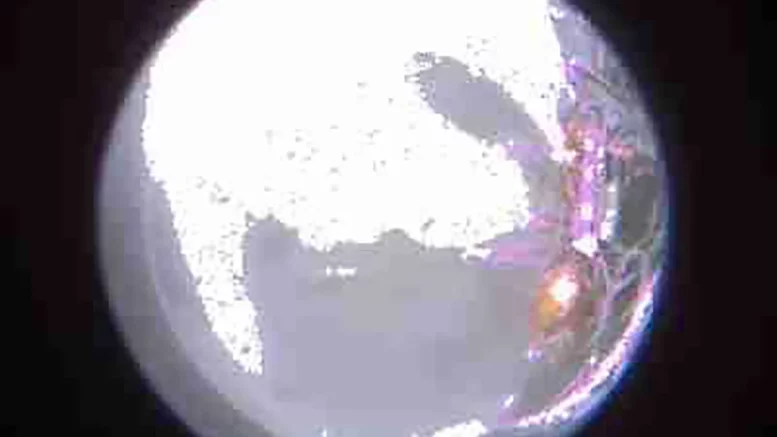The Odysseus spacecraft has transmitted new images it captured of the lunar surface during its tense approach to the moon. Having softly landed on the moon on Thursday, it marks the first US-made lander to achieve this feat since the Apollo era.
Intuitive Machines, the company behind Odysseus, shared the grainy images on Monday morning. Initially, the company had anticipated that the lander would swiftly deliver images from the lunar surface shortly after landing. However, establishing communication with the spacecraft proved to be challenging.
In an update provided on Monday, the company revealed that they now anticipate losing contact with Odysseus on Tuesday, several days earlier than initially anticipated. Flight controllers plan to gather data until the lander’s solar panels are no longer exposed to light, which is estimated to occur by Tuesday morning, leaving Odysseus operational on the lunar surface for less than five days, contrary to previous estimates of up to nine days.
Regarding the images captured, one released on Friday showcased a view of the moon’s Schomberger crater captured during the descent. Monday’s images provided further insight into Odysseus’ journey, with one photograph showing the spacecraft approximately 35 seconds after it pitched over during its approach to the landing site. The camera, situated on the starboard aft-side of the lander, captured this phase as the spacecraft maneuvered to align itself upright before landing.
NASA’s Lunar Reconnaissance Orbiter (LRO) also captured an image of Odysseus’ landing site from a distance. Intuitive Machines disclosed the precise coordinates of Odysseus’ location on the moon, sitting at 80.13°S and 1.44°E, at an elevation of about 2,579 meters (8,500 feet). Notably, the company stated that the landing occurred within 1.5 kilometers (5,000 feet) of the intended site, marking the southernmost landing on the moon to establish communication with ground controllers.
Odysseus carries six science and tech demonstration payloads from NASA, along with cargo from the private sector, including a work of art and a camera named EagleCam. Although EagleCam, developed by students at Embry-Riddle University in Florida, was designed to capture a “selfie” of the spacecraft during its descent, it was not deployed due to last-minute navigation issues. However, the CubeSat remains operational, and efforts are underway to deploy its camera system to capture imagery of the lander in its current state, providing valuable data for Intuitive Machines’ future plans.

